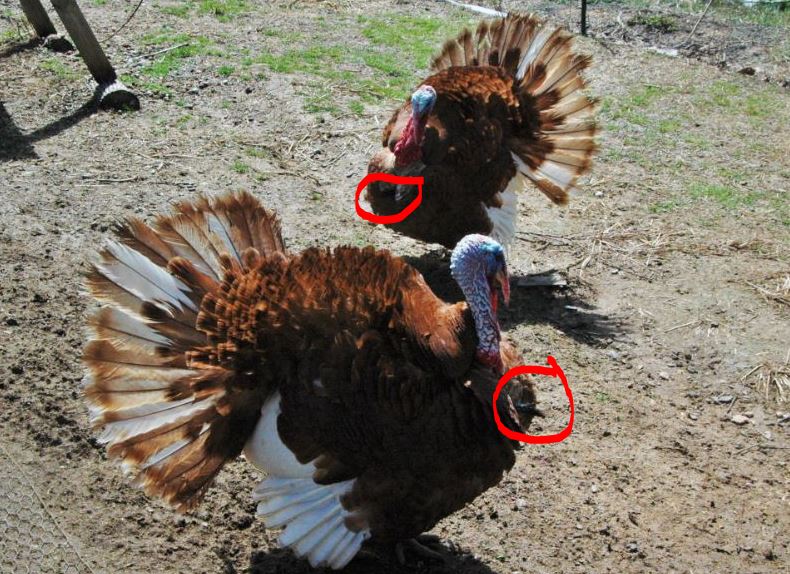Yes, turkeys have penises. The penis is located inside the body and is not externally visible. The turkey’s penis is relatively small compared to its body size.
No, turkeys do not have penises. That’s because they’re birds, and birds don’t have genitals that protrude from their bodies the way mammals do. Instead, male birds have an opening called a cloaca through which they urinate, defecate, and mate.
The cloaca is located at the base of the tail feathers, and it has a little bit of muscle tissue around it that the bird can contract to close off the opening if necessary.

Credit: morningchores.com
Do Turkeys Have Private Parts?
Yes, turkeys do have private parts. Male turkeys have a large, fleshy protuberance called a snood, which hangs down over the beak, and two long, fleshy lobes called wattles that hang down from the lower side of the head. These are used to attract mates.
Turkeys also have a small piece of flesh called a caruncle on the top of their head, which is thought to attract mates as well. Female turkeys do not have these external sexual organs; instead they have a much smaller opening called a cloaca through which they excrete waste and lay eggs.
How Do Turkeys Mate?
Turkey mating season typically runs from March to May. During this time, male turkeys (or “toms”) will compete for the attention of female turkeys (or “hens”). The males will strut around and gobble loudly in an attempt to impress the females.
Once a female has been won over, the pair will mate. This usually happens on the ground, with the male mounting the female from behind. The act itself only takes a few seconds, but it can be repeated multiple times throughout the mating season.
After mating, the female will begin constructing a nest out of twigs and leaves. She will lay anywhere from 8 to 12 eggs in her nest, which she will then incubate for about 28 days. Once the chicks hatch, they are able to fend for themselves and do not need any help from their parents.
How Does a Male Turkey Mate?
When it comes time to mate, male turkeys will put on quite the show in order to attract a willing female. The males will puff out their chest, spread their tail feathers and make loud gobbling noises. If that doesn’t work, they may even resort to physical displays of affection like pecking or nibbling at the female’s neck.
Once he’s found a mate, the male turkey will carefully guide her to a secluded spot using his beak. He will then proceed to mount her and copulate. This process can last anywhere from just a few seconds to over an hour.
During mating, the male will release his sperm which travels up the oviduct and fertilizes the eggs inside the female’s body.
How Do Turkeys Reproduce Without Mating?
turkeys reproduce without mating?
Turkey reproduction is an interesting process because unlike most animals, they do not need to mate in order to produce offspring. This is because turkeys are able to parthenogenesis, which is a form of asexual reproduction.
In parthenogenesis, the female turkey produces eggs that develop and hatch without being fertilized by a male. As a result, all of the offspring will be female since they will have only received DNA from the mother.
While this method of reproduction is rare in the animal kingdom, it does have its advantages.
One advantage is that it allows turkeys to reproduce even when there are no males present. This can be beneficial in situations where there is a lack of males or when the environment is not conducive for mating (e.g., during periods of drought). Additionally, since there is no need for mating, there is no associated risk of injury or disease transmission that can occur during breeding season.
Despite these advantages, parthenogenesis also has some disadvantages. One disadvantage is that it can lead to genetic problems over time since there is no mixing of DNA between generations (i.e., inbreeding). Additionally, since all offspring are clones of the mother, they may be less genetically diverse and thus more susceptible to diseases and other environmental threats.
Male Turkey so my son thinks LOL
Conclusion
Apparently, male turkeys have a pretty impressive appendage. Their penises can grow up to 18 inches long and they have a baculum, or penis bone. While most mammals have a baculum, it is usually only partially ossified.
A turkey’s baculum is almost completely solid.
